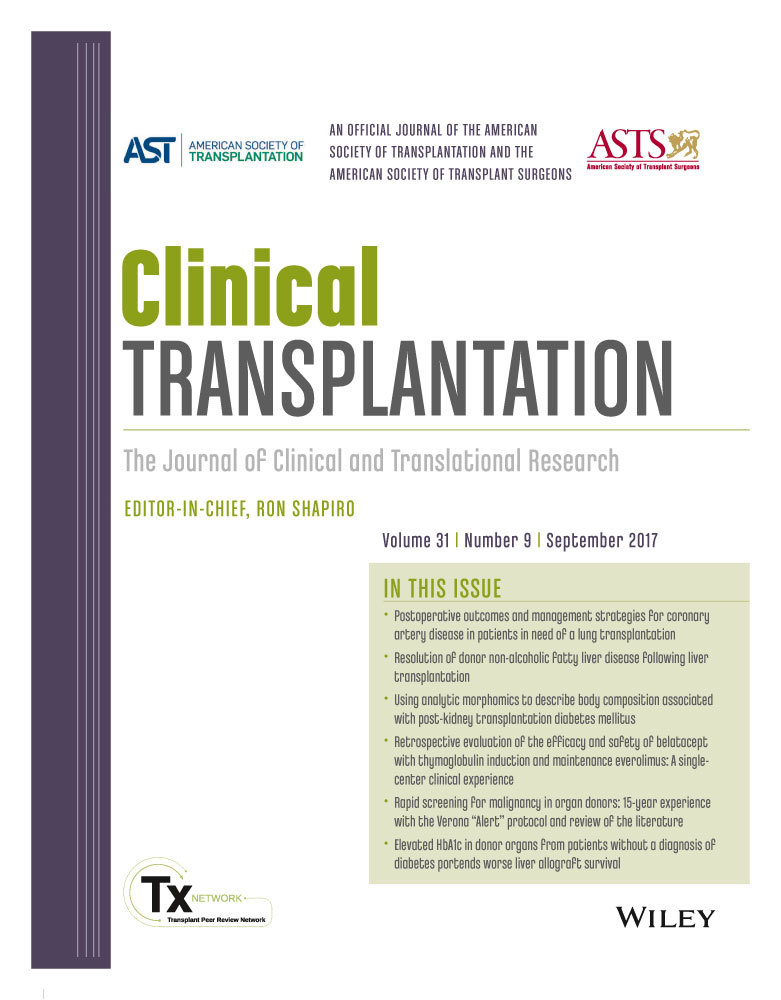Postoperative outcomes and management strategies for coronary artery disease in patients in need of a lung transplantation
Abstract
Background
Patients requiring lung transplantation (LTx) may also have coronary artery disease (CAD). The peri-operative management and long-term outcomes of these patients are not well established.
Methods
Patients referred for LTx from 2008 to 2014 were included in this study. CAD was defined by angiography as no CAD (stenosis <20%), moderate CAD (20%-69%), and significant CAD (stenosis ≥70%). Revascularization was per recommendations of local heart team. Postoperative cardiovascular outcomes and long-term survival are reported.
Results
A total of 1493 patients were screened for LTx during this period and 656 received a transplant. Of the patients that underwent LTx, 51% had no CAD, 33% had moderate non-obstructive CAD, and 16% had obstructive CAD. Forty-three patients underwent revascularization. There was a no increased risk of peri-operative cardiovascular events or for adjusted mortality for patients with obstructive CAD (HR=1.24, 95% CI: 0.83-1.86, P=.290) including those requiring revascularization.
Conclusions
There is a high prevalence of coronary disease in the population of patients with advanced lung disease requiring lung transplantation. Careful evaluation and treatment can allow for patients with all severities of CAD including those requiring revascularization to successfully undergo LTx.




